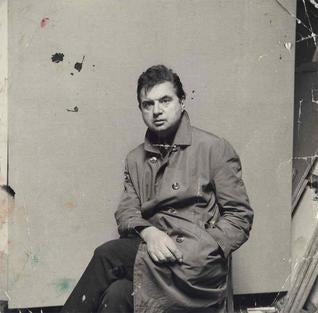Francis Bacon: The Bleak Chronicler of Human Condition

By John Deakin - https://alchetron.com/John-Deakin-1371488-W, Fair use, Link
Borrowing inspiration from Surrealism, film, photography, and the Old Masters, and portraying provocative and disturbing images that carry a raw sense of anxiety and alienation, the Irish-born British figurative painter, Francis Bacon, is celebrated as one of the most unique, engaging figurative painters to emerge during the post-war period, whose grotesque imagery served as method of exploring nihilism and death at a time when Europe had been repeatedly savaged by war.
One of the most successful British painters of the twentieth century, Bacon was born on October 28, 1909, in Dublin, Ireland. Mostly self-taught, Bacon moved to London to escape a hostile home life, and became a part of the local art scene in the British capital, which include his friends Lucian Freud, Isabel Lambert, and John Deakin. He began to paint first in a Cubist style and later in a more Surrealist manner. In 1937, his work included in a London group exhibition entitled “Young British Painters”.
Around 1944, Bacon destroyed most of the work he had produced to date as he believed that it failed to communicate the way he felt about the world. Afterwards, he began creating the works for which he is still remembered, with “Three Studies for Figures at the Base of a Crucifixion” seen as a major turning point. His large canvases depicted human figures, most often a single figure isolated in an empty room, in a cage or against a black background.
Inspired by oth the Old Masters and Surrealism, Bacon produced several compositions based on the work of other painters, notably including his arresting “Study After Velázquez's Portrait of Pope Innocent X” (1953). In this iconic work, Bacon transforms Diego Velázquez's classic portrait into a screaming, terrifying figure. In the age of abstraction, he continued to paint the human face and figure.
In the 1960s, some of his work depict a lone male figure dressed in a business suit, while others showed nude figures, often with grotesquely altered proportions and features. Bacon used brighter colors at times, but themes of violence and mortality were still central to his art. He also painted portraits of people he knew, including fellow artist Lucian Freud and George Dyer.
After the death of his lover in 1972, Bacon's work became even more personalized, with a renewed focus on mortality. Famous for his carousing, he maintained a home and notoriously cluttered studio in London, and continued to paint for the rest of his life. In 1963, a retrospective at the Guggenheim Museum in New York brought international prestige, which continued until his death on April 28, 1992, in Madrid, Spain.
Today his works are held in the collections of The Museum of Modern Art in New York, the Tate Gallery in London, the Art Institute of Chicago, the Hugh Lane in Dublin, and the Albertina in Vienna, among others.
References:
www.theartstory.org/artist-bacon-francis.html
www.artsy.net/artist/francis-bacon
www.biography.com/people/francis-bacon-21415553
www.tate.org.uk/art/artists/francis-bacon-682
www.artnet.com/artists/francis-bacon
www.theguardian.com/culture/2005/Aug/09/edinburghfestival2005.edinburghfestival1
www.artyfactory.com/art_appreciation/portraits/francis_bacon.html
https://en.m.wikipedia.org/wiki/Francis_Bacon
www.dailyartfixx.com/resources/artistbirthdays
